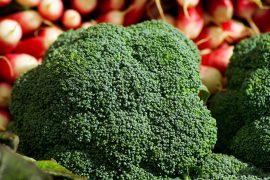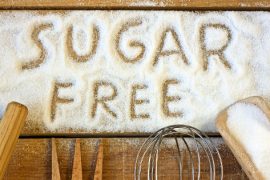It is time to shed some long overdue light on serious and avoidable chemical exposures facing the majority of infants today.
Due to the fact that only 11% of newborns in the US are exclusively breast milk during their first six months of life, it is safe to say that most newborns today are exposed to the ingredients found in infant formula.
Owing to the fact that infant formula is being used during the first year of life, which is the most critical developmental period of the human life cycle (outside embryogenesis itself), it behooves us to make sure that what we are feeding them is truly nourishing, and at the very least, not harming them. Correct?
So, what exactly is being put into the infant formulas millions believe is the closest facsimile to human breast milk available?
We will take a more forgiving approach, and avoid the more obviously lower quality mass market infant formula brands, which use genetically modified products and high fructose corn syrup, to name but a few obvious red flags. Instead, let’s look to a so-called “organic” product, like Earth’s Best Organic Infant Formula, as the assumption here is that it is “Earthy,” “Organic,” and as the label proudly displays: “Produced Without the Use of Potentially Harmful Pesticides.” Did you get that, by the way? “Potentially Harmful Pesticides,” because you know that some pesticides are not actually harmful to infants, right? This strange qualification will take on a clearer, far more chilling meaning in just a moment…
Organic Nonfat Milk, Organic Lactose, Organic Oils (Organic Palm or Palm Olein, Organic Soy, Organic Coconut, Organic High Oleic Safflower or Sunflower Oil), Organic Glucose Syrup Solids, Organic Whey Protein Concentrate, Less than 1%: Mortierella Alpina Oil (a Source of Arachidonic Acid [ARA]), Crypthecodinium Cohnii Oil (a Source of Docosahexaenoic Acid [DHA]), Lutein, Vitamin A Palmitate, Beta-Carotene, Vitamin D (Cholecalciferol), Vitamin E (DL-Alpha Tocopheryl Acetate), Mixed Tocopherol Concentrate, Vitamin K (Phytonadione), Ascorbyl Palmitate, Thiamine Hydrochloride, Riboflavin, Pyridoxine Hydrochloride, Cyanocobalamin, Niacinamide, Folic Acid, Calcium Pantothenate, Biotin, Ascorbic Acid, Choline Bitartrate, Inositol, Calcium Carbonate, Calcium Chloride, Calcium Hydroxide, Ferrous Sulfate, Zinc Sulfate, Manganese Sulfate, Cupric Sulfate, Magnesium Phosphate, Potassium Bicarbonate, Potassium Chloride, Potassium Iodide, Potassium Hydroxide, Potassium Phosphate, Sodium Selenite, Sodium Citrate, Taurine, Organic Soy Lecithin, Nucleotides (Cytidine-5′-Monophosphate, Adenosine-5′-Monophosphate, Disodium Uridine-5′-Monophosphate, Disodium Guanosine-5′-Monophosphate, Disodium Inosine-5′-Monophosphate).
You can also read the ingredient labels here.
Well, let’s begin our inspection with the “Mineral” ingredients.
- Calcium Chloride — A salt of inorganic calcium and chlorine. Classified as an “Irritant” by the Dangerous Substance Directive (one of the main European Union laws concerning chemical safety), also known as the EU Index. [Material Data Safety Sheet]
- Calcium Hydroxide — also known as “slaked lime,” is classified as “Corrosive” and an “Irritant” by the EU Index, and is used in water and sewage treatment as a “flocculant,” or clarifying agent. [Material Data Safety Sheet]
- Cupric Sulfate — classified as “Harmful,” “Irritant” and “Dangerous to the Environment” by the EU Index. It is used as an herbicide, fungicide and pesticide. [Material Data Safety Sheet]
Ok, so, we are only on the third mineral ingredient in “Earth’s Best Organic Infant Formula” and we have found the product contains an ingredient — Cupric Sulfate — that directly contradicts the product’s name and label claims. That is, unless we assume that since uranium and cyanide are chemicals “naturally” found on the Earth, it is OK to call Calcium Chloride, Calcium Hydroxide and Cupric Sulfate “natural,” “Earthy” ingredients, as well. Unfortunately, however, given that Cupric Sulfate IS commonly used as a pesticide/herbicide, it would be untrue to say the product is “Produced Without the Use of Potentially Harmful Pesticides.” This is, from the perspective of consumer advocacy and truth-in-labeling, highly misleading.
So, let’s continue on and see what else the product label has in store for us….
- Ferrous Sulfate: produced as a byproduct of steel production: “In the finishing of steel prior to plating or coating, the steel sheet or rod is passed through pickling baths of sulfuric acid. This treatment produces large quantities of iron(II) sulfate as a by-product.” 1 It is classified by the EU Index as “Harmful” and an “Irritant.” [Material Safety Data Sheet]
- Manganese Sulfate: Classified by the EU Index as “Harmful” and “Dangerous for the environment.” [Material Data Safety Sheet]
- Potassium Bicarbonate: Known to have potentially toxic effects on plants, but generally accepted as safe (GRAS) for human consumption, as determined by the FDA.
- Potassium Chloride: Mostly used to produce fertilizer. It is used in medicine, lethal injections, food processing and as a salt-free substitute for table salt. It has the potential to cause gastrointestinal discomfort, including ulceration when take in supplemental form.
- Potassium Hydroxide: Commonly known as “caustic potash,” and is a strong base, corrosive in nature. It is classified by the EU Index as “Corrosive” and “Harmful.” [Material Safety Data Sheet].
Are you getting the gist yet? See anything Earthy here, other than in the most technical sense of the word as a chemical extracted from the earth?
How about “Organic”? Do these “Corrosive,” “Irritant” and “Harmful” ingredients sound like something you would be willing to feed an infant, at any dose? It gets worse.
If we skip forward to Sodium Selenite, we find it is: “Very toxic” and “Dangerous for the environment,” according to the EU Index. In fact, the Material Safety Data Sheet for sodium selenite indicates it has the same toxicity as sodium cyanide at just 7 mg/kg in the rat. At this level of toxicity it would only take 47.5 milligrams to kill a 15 lb infant. More information in our blogs explain just how toxic sodium selenite and selenate really are.
It is an established fact of history that the US FDA approved selenium in the form of selenite and selenate in the early 1970’s, first for use in animal feed and then soon after for human consumption, before their toxicity was fully appreciated. As discussed in one paper:
“Unfortunately, not much was known about selenomethionine in the early 1970s, when regulatory agencies had to decide which selenium compounds to allow for use in animal feed. The approval in 1974 of sodium selenite and sodium selenate as feed additives created an unsatisfactory situation. First, the approval suggested that these inorganic selenium salts are nutritional forms of selenium, which they are not. Secondly, the approval diverted attention from selenomethionine, which was soon recognized to be superior to the inorganic selenium salts [14]. However, at the time the regulatory action was taken, only the inorganic selenium salts were available at a cost permitting their use in animal feed.”2
It is has also been acknowledged that sodium selenite and selenate should no longer be used in infant formula for the following reason:
“Infant formulas, protein mixes and weight loss products still use almost exclusively sodium selenite or sodium selenate. The continuing use of the inorganic selenium compounds is difficult to justify. This is especially true for infant formulas, which through the use of the inorganic selenium salts deprive the growing infant of the benefits which only selenomethionine can provide. Studies with preterm infants [24,25] have already demonstrated that selenium yeast is safe and effective for enteral selenium supplementation. Selenium yeast and selenomethionine were furthermore shown to be superior to selenite in studies with nursing mothers; specifically, more selenium appeared in the milk of mothers obtaining selenium from selenomethionine than from selenite [26].”3
Of course, the problem here is not simply a matter of one form of selenium being “more nutritious” than another, rather, of one being inherently toxic — at any dose — versus one (selenomethione) having very little, if any intrinsic toxicity when used in reasonable dosages.
Finally, let’s not neglect the last mineral on the list of ingredients: Zinc Sulfate. It is also classified by the EU index as “Harmful” and “Dangerous for the environment.” [Material Safety Data Sheet]
One final comment on the list of ingredients in the product. It contains dl-alpha tocopherol, which is a petrochemically synthesized blend of 8 molecules that resemble those within the natural vitamin E family of tocopherols and tocotrienols. Not only does it have lower antioxidant properties, but it can be argued that it is an endocrine disruptive blend of molecules, that has no place in human nutrition, and certainly not in any infant formula labeled “Natural” and “Organic.”
Now that we have revealed what you might call the “organic-washing” of infant formula, with its inherently inappropriate blend of industrial, inorganic minerals/chemicals billed as “nutritious minerals,” it is important to point out that Earth’s Best, despite its “crunchy” Earth-loving name, is owned by Hain Celestrial Group, which is itself owned by the Heinz Corporation. To view the history of acquisition, go to the Earth’s Best “Our History” page.
This article is not intended to point fingers at a huge corporation for intentionally harming the health of infants. Rather, it is a call to awareness and action regarding outdated “best practices” when it comes to product formulation. The science is clear. The toxicity of these ingredients has already been demonstrated by respected organizations. Infants are all too often looked at as “miniature adults” from the perspective of toxicological risk assessments, rather than what they are: disproportionately (if not exponentially) more susceptible to the adverse effects of environmental exposures. We must demand the reformulation of products that are putting their health at risk, or at the least, refuse to purchase and use them any longer if the companies who produce and market them refuse to reform themselves.
References
1Egon Wildermuth, Hans Stark, Gabriele Friedrich, Franz Ludwig Ebenhoch, Brigitte Kuhborth, Jack Silver, Rafael Rituper “Iron Compounds” in Ullmann’s Encyclopedia of Industrial Chemistry Wiley-VCH, Wienheim, 2005.
2,3 Nutritional Selenium Supplements: Product Types, Quality, and Safety, Gerhard N. Schrauzer, PhD, CNS, FACN
About the author:
Sayer Ji is founder of Greenmedinfo.com, a reviewer at the International Journal of Human Nutrition and Functional Medicine, Co-founder and CEO of Systome Biomed, Vice Chairman of the Board of the National Health Federation, Steering Committee Member of the Global Non-GMO Foundation.
© [3.4.12] GreenMedInfo LLC. This work is reproduced and distributed with the permission of GreenMedInfo LLC. Want to learn more from GreenMedInfo? Sign up for the newsletter here http://www.greenmedinfo.com/greenmed/newsletter.”









